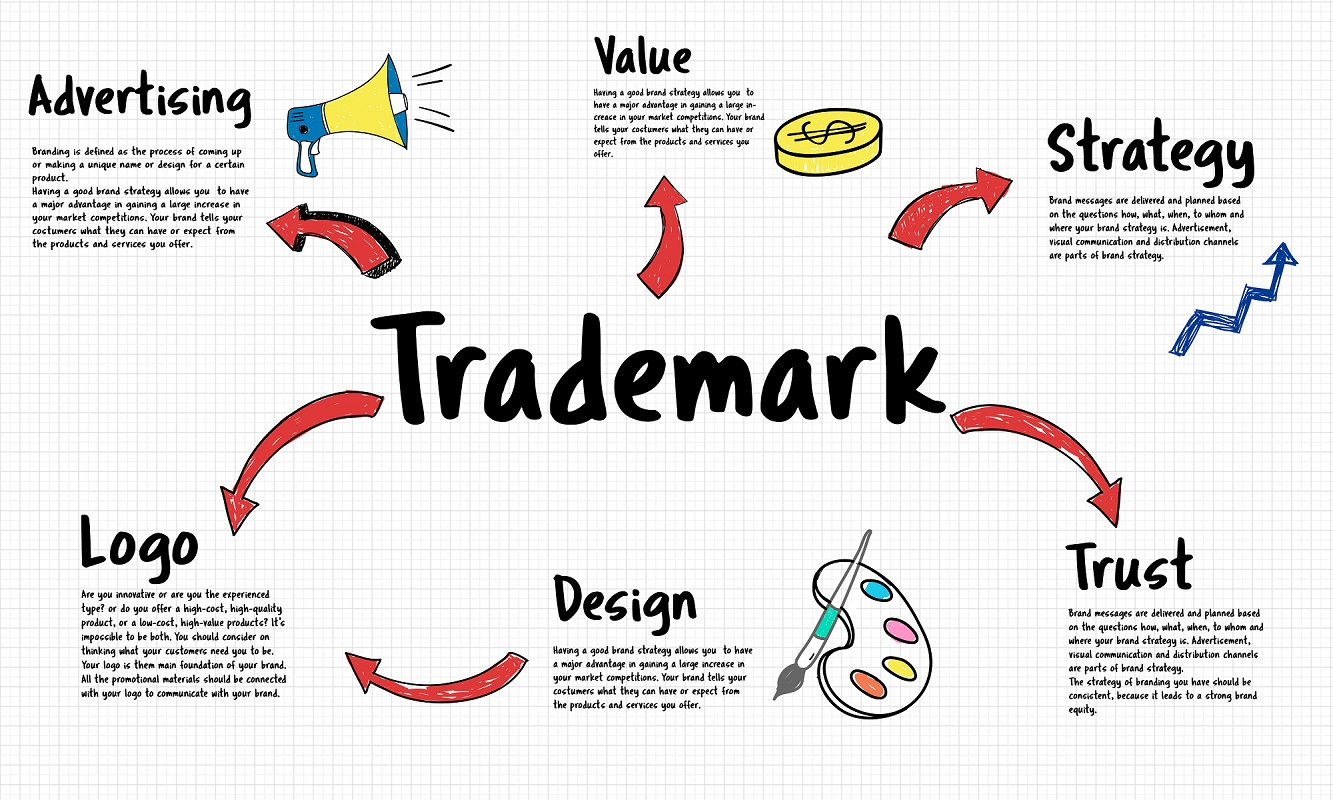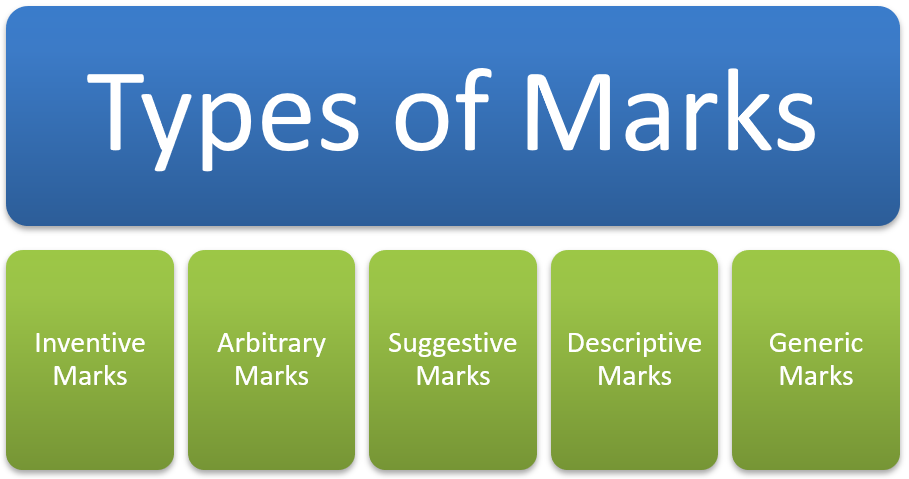Zatapult

Today’s world is etched with cut-throat competition where brands are investing huge amounts of money to build a distinguish identity and win customer loyalty.
One of the best ways for a brand to distinguish its products from that of its customers is through the use of trademarks. A trademark is a unique sign that a company uses to distinguish its products from identical or similar products of that of its competitors.
The trademarks are classified into different categories on the basis of their inherent strength and likelihood of registration. For example, marks classified as fanciful and arbitrary trademarks are easily registrable and receive strong legal recognition.
Trademark definition
A trademark is a word, symbol, design, phrase, expression, sign or a combination of two or more of these things which is used to identify particular goods or services. The trademark should serve as a marker for the trademark holder and it should be capable of distinguishing the products or services to which it is attached from similar goods or services of another manufacturer.
The strength of a trademark determines whether it can be afforded legal protection or not. Certain marks that are inherently strong can be easily registered with the trademark office. However, if the trademark lacks inherent strength and is unable to distinguish the products or services, then it will not be registered.
A registered trademark can be used by the trademark holder. Other persons can use the trademark only with the prior permission of the holder. The trademark holder has the exclusive right to commercially exploit the trademark.
Registration of trademarks
Trademarks in India are governed by the Trademark Act, 1999. The proprietor of a trademark can make an application for the registration of the trademark to the Registrar of Trademarks. The Registrar may accept the application absolutely, reject the application or accept the application subject the fulfillment of certain conditions or modifications.
The Registrar accepts or rejects the trademark on the basis of its inherent strength. The Registrar will ascertain whether the trademark has distinctiveness and secondary meaning or not. The factors taken into consideration involve the market share of the trademark, the reputation of the mark in the general public, whether the trademark would create any confusion in the mind of the customers, etc.
After acceptance, the Registrar advertises the application and any person can, within 4 months of the advertisement, file an objection against the registration of the trademark. In case any objection is received, the Registrar communicates the notice of objection to the applicant and the applicant has to file a counterstatement stating the grounds on which he relies for the registration of his trademark. If the applicant does not file the counterstatement, then the applicant would be deemed to have abandoned the application.
Thereafter, the Registrar provides an opportunity of hearing to the applicant as well as the objector and decides the objection. If the Registrar finds no merits in the objection, then the registration is permitted and a certificate of registration is issued in favour of the applicant.
Strength of trademark
The strength of a trademark is determined on the basis of 2 factors.
1. Inherent Strength:
The inherent strength of a trademark is the measure of its distinctiveness. The trademark is said to be inherently strong if it is unique and creative. Words used in common parlance are generally regarded as weak trademarks.
2. Commercial strength:
Commercial strength is the measure of the market recognition that the trademark enjoys.
Types of marks

1. Invented or Fanciful marks:
These are the marks which have no clear meaning and have been newly invented. These marks have great strength and can easily be registered. These marks only have meaning when they are used in relation to the concerned product or service.
For example, the trademark ‘Pepsi’ is an invented mark as it has no inherent meaning and is used to denote the soft drink produced by a specific company. Other examples of fanciful marks include Spite, Nike and Rolex.
Fanciful marks or invented marks are regarded as the strongest trademarks in many jurisdictions. The inherent strength of these marks is that they have no meaning apart from the one where they are associated with the product or service to which they are attached.
2. Arbitrary Marks
Arbitrary marks have an actual meaning but their meaning has no relation with the product or service to which they are associated. They do not describe or suggest any characteristic of the product or service for which they are used.
For example, the trademark ‘Apple’ is used for technological products.
Arbitrary marks receive strong legal protection as they can be used to effectively identify and distinguish products or services.
3. Suggestive Marks
Suggestive trademarks are those which suggest a particular trait or quality of the product or service to which they are attached. They have the unique ability of creating a perception in the customer’s mind in which the nark is tied to the product. While the suggestive trademarks have good inherent and commercial strength, they are not as strong as fanciful and arbitrary marks.
For example, Jaguar (suggesting a fast car) and Airbus (suggesting airplane services) are suggestive trademarks.
4. Descriptive Marks
Descriptive marks are those which clearly describe the product or its characteristics. In not cases, the registration of descriptive marks is not allowed. However, if the applicant is able to show that the trademark has acquired a secondary meaning due to long usage, then the registration of the trademark may be allowed. The applicant has to show that due to long use, the trademark has come to be associated with the product and has acquired distinctiveness.
For example, if the word ‘matrimony’ is used in the trademark by a company providing marriage-related services, then such a mark would be descriptive mark.
However, it is pertinent to note that distinctiveness and secondary meaning can be proved only be establishing extensive use over a period of several years. Commercial strength, that is, marketplace recognition may also be used to establish secondary meaning of the trademark.
5. Generic marks
Generic marks are those which directly indicate a product or service. These marks cannot be registered as no proprietor has the right to use a mark which generally identifies a product. These trademarks lack distinctiveness and are unable to distinguish the goods of one manufacturer from those of others. Moreover, the registration of generic trademarks would have the effect of stifling competition and thus, these trademarks cannot be registered.
Generic marks are not inherently strong as they are ordinarily used in common parlance. For example, escalator, raisin bran, etc. are generic marks. However, these marks may be registered if they acquire strong marketplace recognition.
For example, Booking.com was registered as a trademark because of its strong market recognition and commercial strength.
Conclusion
Inventive, arbitrary and suggestive marks are generally considered to be strong and are easily registered. On the other hand, descriptive trademarks are discouraged and are generally not registered unless the applicant is able to establish acquired secondary meaning. The strength of a trademark depends on its inherent distinctiveness.
The best choice for obtaining a trademark registration is adopting a fanciful trademark. Moreover, if you desire to register a suggestive or descriptive trademark, then that can be done only after the mark has acquired a secondary meaning and is associated with your product or service in common parlance.
Article contributed by Mr. Gautam Badlani.